Patients
-
- Angiography
- Angioplasty and Stenting
- Aortic Aneurysms
- Biliary Drainage and Stenting
- Carotid Artery Stenting
- Central Venous Access
- Colonic Stenting
- Fibroids
- Gastrointestinal Haemorrhage
- Gastrostomy
- Hepatic Malignancies
- Kidney Tumour Ablation
- Minimally Invasive Treatments for Vascular Disease
- Nephrostomy
- Oesophageal Stents
- Pelvic Venous Congestion Syndrome
- Percutaneous Nephrolithotomy
- Prostate Artery Embolisation PAE
- Pulmonary Arteriovenous Malformations
- PAE Patient Information Leaflet
- Ureteric Stenting
- Varicoceles
- Varicose Veins
- Vascular Malformations
- Vertebral Compression Fractures
- Vertebroplasty and Kyphoplasty
Gastrostomy
Content by Dr Ram Kasthuri, Consultant Interventional Radiologist, Department of Radiology, Gartnavel General Hospital, Glasgow.
What is a gastrostomy procedure?
A Gastrostomy procedure refers to the insertion of a hallow tube through the skin into the stomach. The word “gastrostomy” is derived from the Greek words gaster (= stomach) and stoma (= a mouth or opening).
Why is it performed?
A gastrostomy is performed for feeding and nutritional support.
There are a number of reasons for not being able to eat and drink adequately. This may be due to a blockage in the back of your throat or the food pipe (called the oesophagus) preventing the food going down into the stomach. It could also be due to a stroke which prevents adequate swallowing.
Who performs gastrostomies?
Gastrostomies can be performed by an interventional radiologist (a doctor trained in less invasive procedures using x-rays) or by an endoscopist (a doctor trained in the use of an endosope which is a camera used to look into the gullet, the stomach and the bowel). Occasionally gastrostomies can be performed during an operation by the surgeon.
The following section is restricted to gastrostomies in interventional radiology.
How is a gastrostomy performed?
Conscious sedation and analgesia is usually administered. This means giving the patient a combination of painkillers and medications that make the patient slightly sleepy. This is not a general anaesthetic where the patient is fully asleep.
The first step usually is to place a tube in the stomach through the nose (nasogastric) or the mouth (oro-gastric) and inflate the stomach with air. The back of the throat will be numbed with local anaesthetic spray prior to this tube placement.
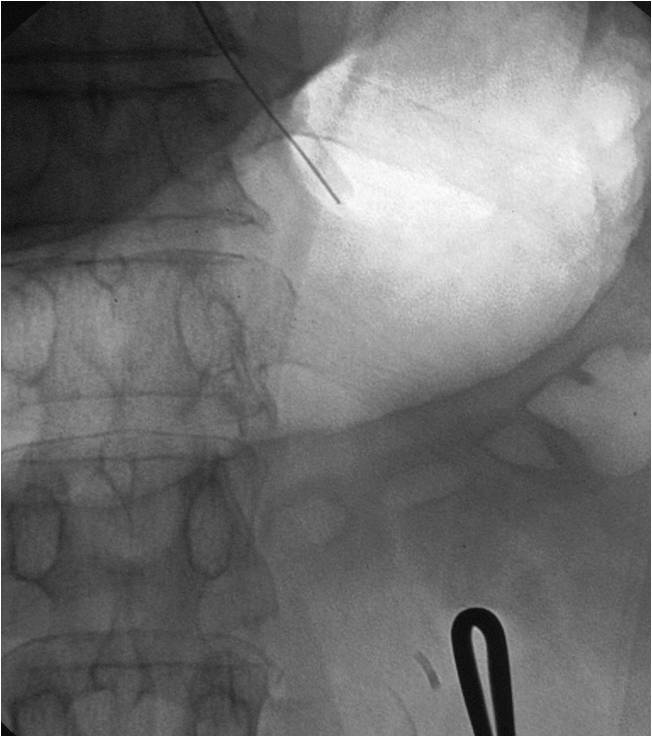 |
Figure.1 – X-ray image of stomach inflation prior to gastrostomy insertion. |
The next step is to clean the skin over the stomach in the upper abdomen and cover using sterile drapes.
Using X-ray guidance and ultrasound, a suitable skin site is selected. This is numbed adequately using local anaesthetic.
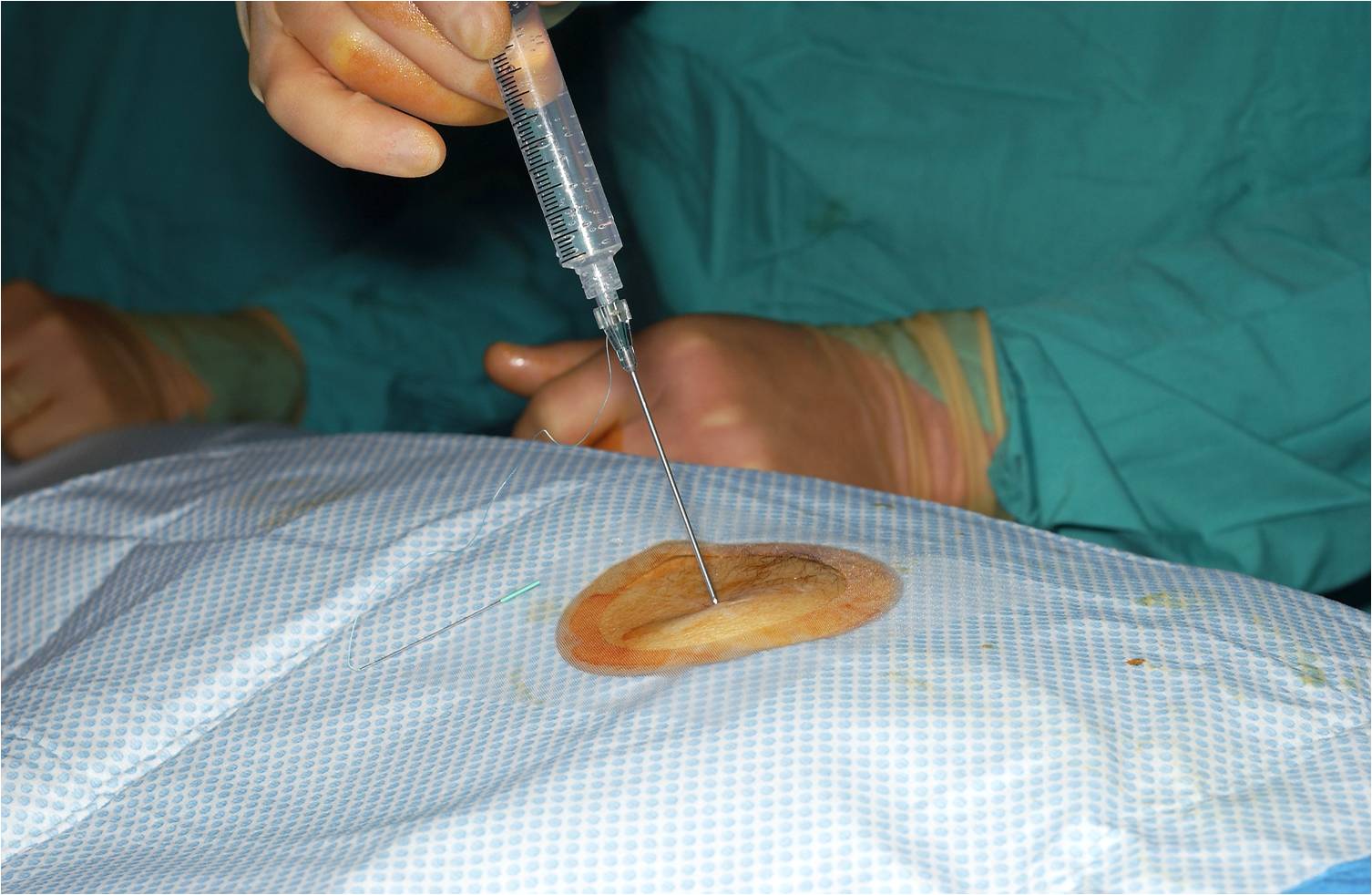 |
Figure.2 - Skin site is numbed using local anaesthetic. |
The stomach is then punctured twice with small needles and “T” shaped sutures placed to hold the stomach up. The stomach is then punctured again under x-ray guidance and a guide wire introduced into the stomach. This path is dilated to the required size and the gastrostomy tube is sited.
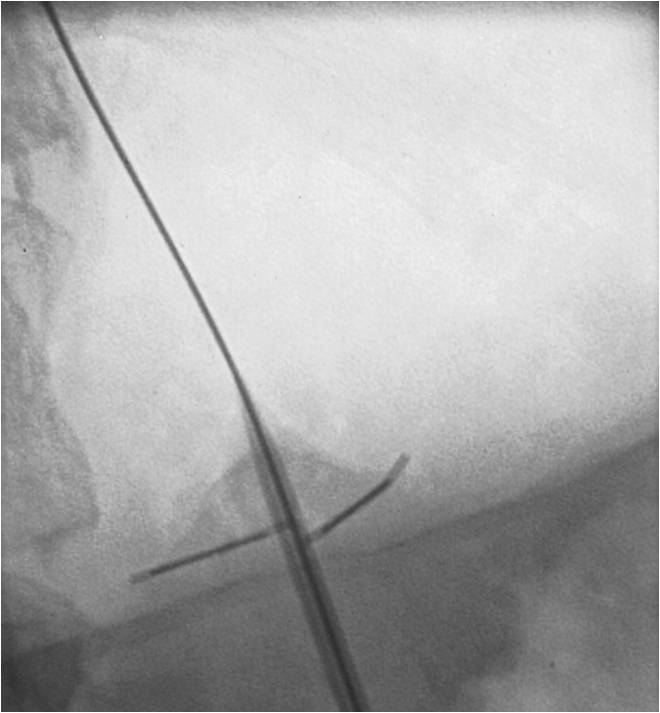 |
Figure.3 –X-ray image demonstrating initial “T” sutures to hold the stomach up. |
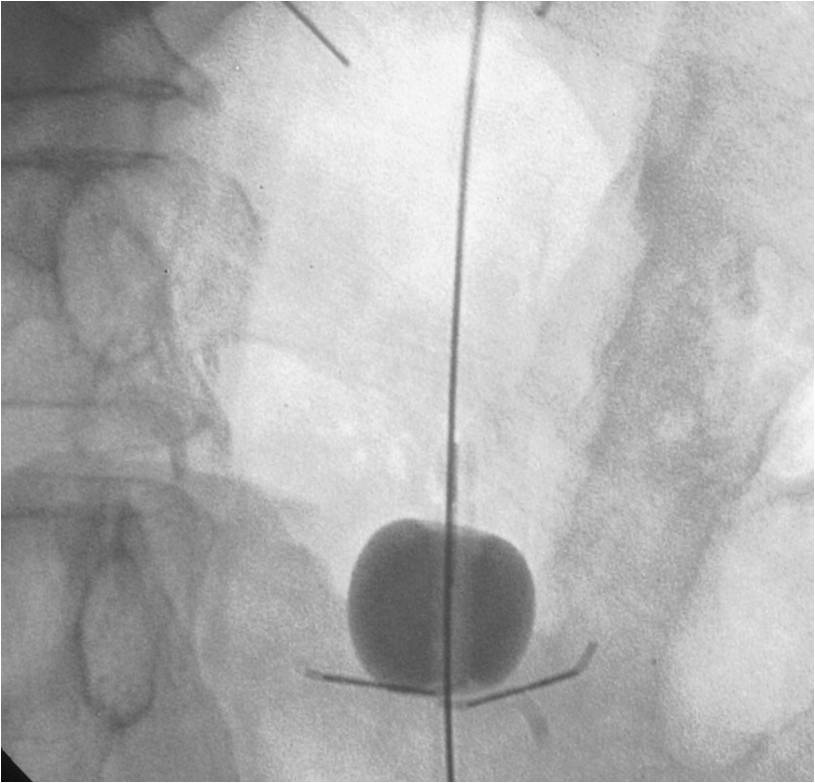 |
Figure.4 – X-ray image demonstrating a balloon gastrostomy tube in place. |
There are a number of types of gastrostomy tubes with different locking mechanisms to hold the tube in place. A typical balloon gastrostomy tube and the kit used are shown in figures.5 & 6.
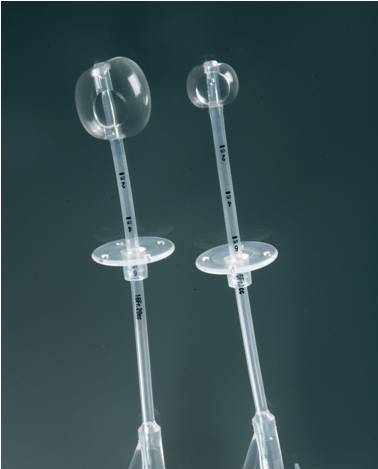 |
Figure.5 – Example of a balloon gastrostomy tube. |
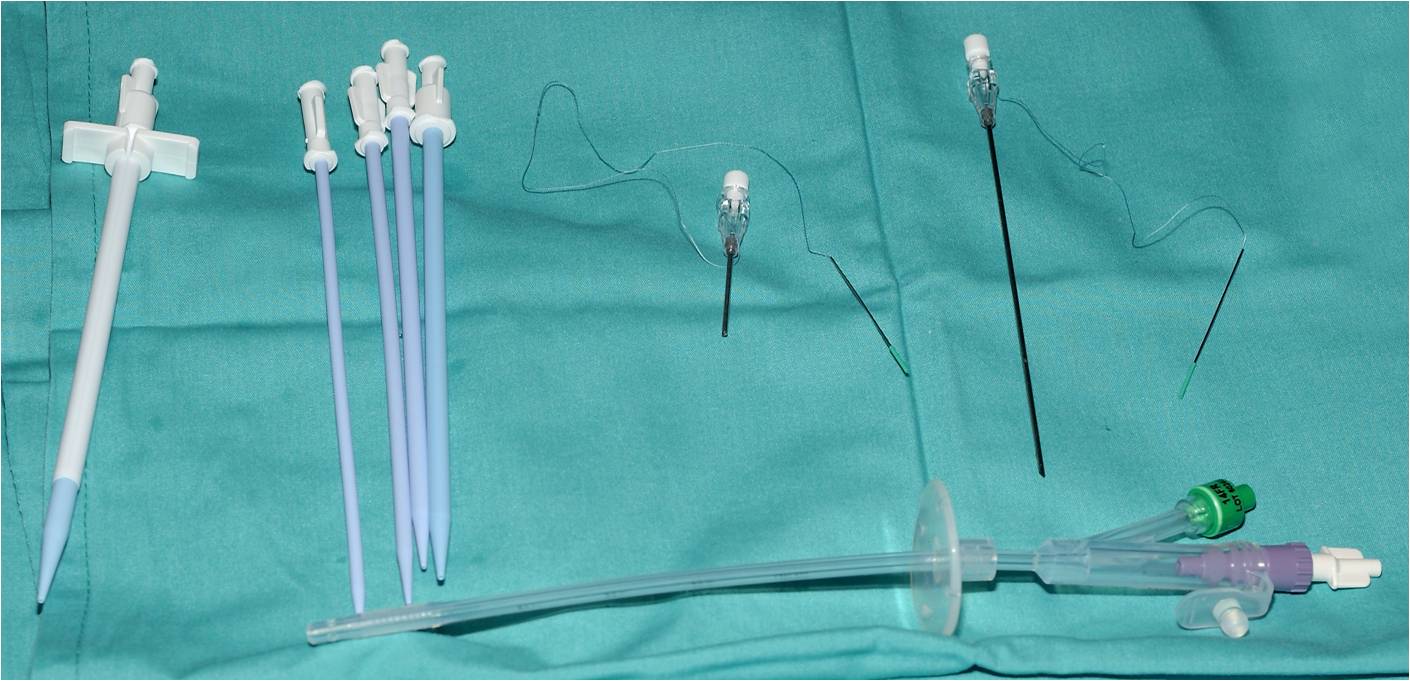 |
Figure.6 - Example of a typical balloon gastrostomy kit. |
What happens after the procedure?
After insertion of the gastrostomy tube, observations including the pulse rate and blood pressure are made regularly for about 4 hours to ensure that everything is alright.
The commencement of gastrostomy use is a gradual process and begins with water/clear liquids from about 4 hours after the procedure. The tube is usually ready for feeding from the next day.
When does feeding commence and who is involved?
As mentioned previously, the use of a gastrostomy tube is a gradual build up. The nutritionist is closely involved in deciding the precise nature and frequency of the feed. Further, most hospitals in the UK have specialist nurses looking after the gastrostomy tubes. The doctor, usually hospital specialist looking after you will also be closely involved in the care and use of the gastrostomy tube.
What are the potential complications?
Gastrostomy is a relatively safe procedure, but any medical procedure can be associated with a few complications. Minor complications include leakage of food or fluid around the tube onto the abdominal wall surface, pain at the incision site, mild bleeding at the incision site or infection at the incision site. You should bring it to the attention of your doctor or nurse if this occurs. Major complications are rare but can occur and include major bleeding, peritonitis (an infection inside the abdominal cavity) and damage to the colon.
Mortality from the procedure is about 1 in 400.
Unusually, the radiologist is unable to insert the tube (approximately 5-10 in 100)
On a longer term, the common problems are tube blockage and the tube falling out. In both these circumstances, contact should be made with your doctor or nurse immediately.
What are the alternatives?
There are alternatives to gastrostomy feeding tubes.
Nasogastric (NG) feeding tubes are tubes passed through the nose into the stomach for feeding. It is secured to the face with tape. These are usually not used in the long term as these tubes can cause irritation, infection or bleeding of the nose and throat. These are also at risk of being pulled out. The other alternative is a jejunal tube i.e. tube placed in the small bowel, by the surgeon. This requires an operation.
How is a gastrostomy tube removed?
Removal of a gastrostomy is straight forward, but should only be done by appropriately trained personnel. The locking mechanism which enables retention of the tube should be excluded first and the tube then removed. This is again performed under local anaesthesia.
Is there guidance from the National Institute of Clinical Excellence (NICE)?
Gastrostomies are considered standard clinical practice, with an efficacy and safety profile that is sufficiently well known. There are therefore no direct guidelines set out by NICE. However, they are discussed in the NICE guidance on “Nutritional support in adults”. This document can be found at;
Are gastrostomies performed in the private sector?
Yes. Most hospitals in the private sector are able offer gastrostomy, but local practices vary. You should contact a local private hospital for more details.
